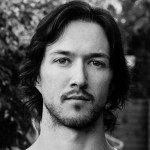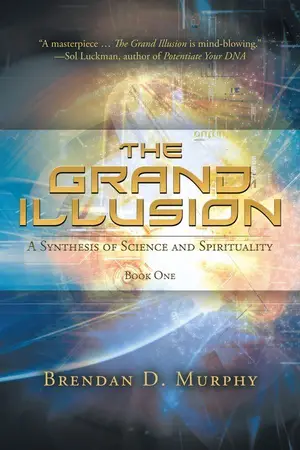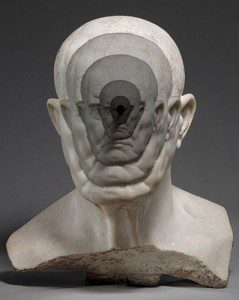27th April 2015
Guest Writer for Wake Up World
Etymologically, the word consciousness derives from the words scire (to know) and cum or con (with). Consciousness is “to know with.” So if you, the persona, cognize (to know or be aware of), who are you cognizing with? Is there more to consciousness than the Freudian ego and unconscious?
Mathematical physicist Roger Penrose has written:
“A scientific world-view which does not profoundly come to terms with the problem of conscious minds can have no serious pretensions of [sic] completeness… I would maintain that there is yet no physical, biological, or computational theory that comes very close to explaining our consciousness or intelligence.”[i]
Indeed, in the past (and even today?) some scientists had taken the absurd position that consciousness is an illusion. This, while providing a nonsensical reason to ignore the problem of consciousness, obviously fails to sate the curious inquirer’s queries regarding how we got here and what we are doing here as conscious beings. Since the dawning of the Age of Reason in the 1700s, materialistic philosophy as we know it — derived from the mechanistic worldview — has steadfastly maintained that what we call experience arises solely as a by-product of the brain’s internal workings. No brain, no consciousness.
But is it really that simple? What about functions of consciousness that appear to transcend the cranial boundaries of our heads?
The Age of Reason said that these forces had only ever existed in man’s imagination; only reason could show man the truth about the universe. “The trouble was,” according to Colin Wilson, “that man became a thinking pygmy, and the world of the rationalists was a daylight place in which boredom, triviality and ordinariness were ultimate truths.”[ii]
The Age of Reason glorified the rationalist, who, enamoured of his endless linear cogitations, was blinded to faculties of consciousness that actually transcended them: faculties that would have allowed him not to merely philosophize about deeper levels of reality, but actually access them. “This is the great tragedy of modern man,” wrote occultist, philosopher, and composer Dane Rudhyar. “His much acclaimed scientific spirit frees him of the compulsions of subrational and subconscious states of mind, only to bind him to an empty rationalism and a quantitative analytical intellect, both of which actually entomb him in a sarcophagus filled with only the mimicry of life. This sarcophagus is the ‘megalopolis’—the monstrous city.”[iii]
But something stirs in the bowels of the concrete jungle. An international online survey of paranormal experiences had met with an overwhelming response, according to Australian researchers in 2006. The survey, on phenomena that cannot be explained using the current “laws” of science, is by researchers at Monash University in Melbourne. A recent (for the time) Gallup poll revealed that 75% of Americans hold at least one paranormal belief, and a UK newspaper poll showed that 60% of Britons accept the existence of the paranormal, say the researchers. According to the researchers, the survey is not about beliefs or whether parapsychological phenomena exist, rather it is about what people have experienced and the impact it has had on their lives.
Some 2,000 people had made contact via the internet within six weeks of the survey beginning. A whopping 96% of respondents claim to have had at least one brush with the paranormal. The exercise seeks to gauge the frequency, effect, and age of onset of unexplained phenomena such as premonitions, out-of-body and near-death episodes, telepathy, and apparitions. Results as of 2006 showed that 70% of respondents believe an unexplained event changed their lives, mostly in a positive way. Some 70% also claim to have seen, heard, or been touched by an animal or person that wasn’t there, 80% report having had a premonition, and almost 50% recalled a previous life.[iv] In May 2000, the New York Times Sunday Magazine published results of a poll conducted by Blum & Weprin Associates; a huge 81% said they believed in life after death.[v]
Virtually all of these beliefs hint at (and require in order to be true) the existence of other realms—other realms in which consciousness can operate. A 2005 poll taken by the Scottish paranormal society showed that more people are likely to believe in ghosts and the paranormal than have faith in any organized religion. A Gallup survey taken in 2005 showed that about three in four Americans profess at least one paranormal belief.[vi] This is a massive amount of “paranormal” experience and belief—all of it depending on the existence of other levels of reality, without which such experience can only be labeled as delusion and fantasy. While the fanatical skeptic would find such convenience irresistible, convenience and expedience are not our goals here.
Did you know that the American Psychiatric Association’s Diagnostic and Statistical Manual of Mental Disorders (DSM) has now been amended so that genuinely psychic people are no longer considered “disordered”?[vii]
Intuition and Creativity
Srinivasa Ramanujan (born in India, 1887–1920) has been called the strangest man in all of mathematics, probably in the entire history of science. Working in isolation from his peers, this genius was single-handedly able to re-derive a hundred years’ worth of Western mathematics. As Michio Kaku reports in Hyperspace, the tragedy of his life is that much of his work was wasted rediscovering known mathematics.[viii] Most interesting to us, Ramanujan said that the goddess Namakkal inspired him in his dreams; in other words, the source of his creative genius was this other realm within his sleep, rather than ordinary waking consciousness.
Is there a link between this other realm of sleep and paranormal phenomena? At a glance, such a presumption appears to be a stretch, but the reservation of judgment is highly recommended at this point. Carl Jung once said: “The images and ideas that dreams contain cannot possibly be explained solely in terms of memory. They express new thoughts that have never yet reached the threshold of consciousness.”[ix]
Ramanujan appears to provide an excellent example of the type of non-ordinary information access that the Russian paranormal researchers might call hypercommunication, and he isn’t alone among specialists, pioneers, giants of science, and so-called regular people. In fact, pioneer psychiatrist and consciousness researcher Stanislav Grof found that during LSD experiences his own patients were capable of accessing the “collective unconscious,” obtaining very specific, accurate, and detailed knowledge. In the LSD training program for scientists, relevant insights occurred in fields as diverse as cosmogenesis, the nature of space and time, subatomic physics, ethology, animal psychology, history, anthropology, sociology, politics, comparative religion, philosophy, genetics, obstetrics, psychosomatic medicine, psychology, psychopathology, and thanatology.[x]
Ramanujan, assuming he really did receive detailed formulas in his dreams via the subconscious, provides perhaps some indication of just how accurate and detailed this knowledge can be. As we will see, these insights that defy the Freudian and Newtonian-Cartesian (reductionist) worldview/s abound in the literature. In 1862 the chemist Friedrich August von Kekule famously arrived at the solution for the chemical formula for benzene in a dream wherein he saw the benzene ring in the form of a snake biting its tail—an archetypal symbol in itself—the Ouroburos. In a supreme historical irony, Descartes’ principles of what ultimately became the mechanist philosophy originated from a dream on the eve of St. Martin’s day of 1619 in which the “Angel of Truth” explained to him that mathematics was the key to unlocking the secrets of Nature![xi]
Similarly, Nikola Tesla constructed the electric generator… after the complete design of it appeared to him in great detail in a vision. The design for the experiment leading to the Nobel Prize–winning discovery of the chemical transmission of nerve impulses occurred to the physiologist Otto Leowi while he was asleep. Albert Einstein discovered the basic principles of his special theory of relativity in an unusual state of mind; according to his description, most of the insights came to him in the form of kinaesthetic sensations.[xii]
Einstein had said: “The supreme task of the physicist is to arrive at those universal elementary laws from which the cosmos can be built up by pure deduction. There is no logical path to these laws; only intuition, resting on sympathetic understanding of experience, can reach them.”[xiii]
Many of the great scientists have said very similar things. From out of nowhere a revelatory vision or understanding hits them, as if suddenly downloaded into their minds from some esoteric conceptual repository. It is interesting that many people find in lucid dreams that they can learn skills that translate directly into real waking life or they can solve problems in the conscious dream state that in the physical world had stumped them, and moreover, these solutions actually work.[xiv] Francis Crick was under the influence of LSD in 1953 at the moment when he perceived the double helix shape and unraveled the structure of DNA.[xv] The chemist D. I. Mendeleyev saw his entire periodic table of elements one night in a dream. And of course, many of history’s greatest and most successful musical artists came up with their best material under the influence of one drug or another.
Oprah Winfrey says, “My business skills have come from being guided by my inner self—my intuition.”[xvi] She’s not alone among the financially abundant. Researchers have tested CEOs of successful corporations for their ability to see the future, such as by predicting a string of numbers they would be shown later. They found that the CEOs who are good at this are usually those who are also highly successful in running their corporations, while CEOs who did not have this ability tend to have mediocre success rates in their corporations. “In one study,” says Dr. Larry Dossey, “experimenters were able to predict in advance the most successful corporate balance sheets by how well the CEOs did on tests that measured their ability to predict the future, such as a string of numbers they’d be shown later.”[xvii]
In 1982 the St. Louis Business Journal tested how a psychic would fare against professional stockbrokers over a six-month period, and reported that the psychic, who had no formal training in stockmarket trading or analysis, outperformed 18 of 19 professional stockbrokers. During the testing period, the Dow Jones Industrial Average fell 8% but the psychic’s stocks went up an average of 17.2%, while the sole broker who beat her achieved 17.4%.[xviii] Physicist and psi researcher Russel Targ’s research group Delphi Associates succeeded in psychically forecasting for nine consecutive weeks the fluctuations in the silver commodity futures markets, earning them a tidy $120,000.[xix] Psi* techniques are playing an increasingly important role on Wall Street, according to Dean Radin’s sources.[xx] In 1987 Richard S. Broughton, scientist and former president of the Parapsychological Association, pointed to the need-serving nature of psi and the competitive advantage it often provides in the struggle for survival—Darwinists rejoice.[xxi]
Many scientists have had profound interests in fields beyond the reach of the science of their day. For instance, Isaac Newton was an obsessive alchemist[xxii] and Freemason in search of the way to transform consciousness, Thomas Edison built machines to try to facilitate communication with the dead, and Marie Curie attended séances. The list of such eminent scientists with keen interests in the paranormal goes on and on. Is it a credible suggestion that they all were merely deluded into pursuing these areas by cunning charlatans or irrational, wishful thinking? We are about to see that there is clearly more to it than this. Even Freud, whose attitude towards the occult was originally negative, changed his tune as he matured and learned more about it, suggesting, in a 1949 paper called Psychoanalysis and Telepathy, a union between psychoanalysts and occultists: “One might expect a mutual sympathy between the two…An alliance of, and collaboration between, psychoanalysis and occultists would seem to be both plausible and promising.”[xxiii]
What about those modern-day scientists and professionals who have experiences in the “paranormal” realm? Brian Weiss, psychiatrist, hypnotherapist, and author, wrote:
The respected chairman of a major clinical department at my hospital is a man who is admired internationally for his expertise. He talks to his deceased father, who has several times protected him from serious danger. Another professor has dreams that provide the missing steps or solutions to his complex research experiments. The dreams are invariably correct. Another well-known doctor usually knows who is calling him on the phone before he answers it…[xxiv]
If these insights come from only one man, imagine what else we might be missing out on.
No Sacred Cows
With so many people (many indeed being iconic historical figures) experiencing what they are supposedly not meant to, the reasonable individual might be forgiven for wondering if there is something more to consciousness than our materialistic paradigms would have us believe. Can we go further than questioning the assumed legitimacy of orthodox materialistic theories which reduce consciousness to a mere epiphenomenon (by-product) of physical matter (the brain) and even—heaven forbid—suggest that they are not merely incomplete, but actually types of superstitions in themselves? W. Heitler, a theoretical physicist at the University of Zurich, thinks so and says in his book Man and Science:
Belief in a mechanistic universe is a modern superstition… based on a more or less extensive series of correct facts, facts which are subsequently generalized without warrant, and finally so distorted that they become grotesque… The “witch superstition” cost innumerable innocent women their lives, in the cruelest fashion. The mechanistic superstition is more dangerous… When once we have got to the stage of seeing in man merely a complex machine, what does it matter if we destroy him?[xxv]
The process of generalizing without warrant, as Heitler puts it, is essentially the process of inductive logic that is theoretical science’s proverbial bread and butter, starting with particular data or concepts and then extrapolating out or deriving broader generalizations (that may or may not be accurate). As we shall see with the mechano-materialistic outlook, many of these broad generalizations are inaccurate. An example: scientists discover that brainwave states and neurochemical processes affect and alter states of consciousness and perception. From this, the materialistic scientist draws the conclusion (interprets) that consciousness is therefore entirely a brain-based phenomenon. Inductive logic is a great way to go drastically wrong while remaining entirely logical within a given framework.
Deductive logic works the other way: you start with broader conclusions/premises and try to draw more detailed facts. This too obviously has its limitations. You could make the complete opposite mistake; for example, someone has an “out-of-body experience” and concludes that, since they could still perceive while completely separate from brain and body, therefore the brain has nothing to do with human consciousness. This is a silly example, but may illustrate the point. Incidentally, the Tibetan word for body is lü, which means something you leave behind, like baggage.[xxvi] Could the Tibetans know something we sophisticated Westerners don’t?
I shall state confidently from the outset that consciousness does not arise from the brain; however, once anchored by the brain, the brain mediates conscious experience (unless consciousness is completely separated from the brain as in the “near-death experience” in particular, which we will deal with later). “Yes! says the quantum theorist, because changing the measurement apparatus does certainly change what can be measured, and therefore changes the event.”[xxvii]
Canadian brain researcher and specialist Dr. Michael Persinger, who discovered connections between electromagnetic (EM) fields and changes to the brain’s temporal lobe, established that exposure to weak magnetic fields can induce altered states of awareness reminiscent of psychic and mystical experiences, the sensing of a “presence,” experiences of “God,” and other physical effects. The temporal lobe has been linked to out-of-body and mystical experiences, as well as to feelings of dissociation and hallucinations, by neuroscientist Peter Brugger.[xxviii] Such studies in the nascent field of neurotheology do indeed show the mediation of conscious experience by the brain, but to infer from these facts that the brain actually generates consciousness where previously there was none is an unjustifiable and counterproductive leap of faith.
The brain acts, as authors such as Grof have put it, as a “reducing valve” for consciousness, tuning and altering it, acting as a conduit rather than the generator. Case in point: studies in near-death experiences (dealt with here but in even greater depth in TGI 2) reveal that transcendent states of awareness can be experienced by people who are clinically dead, with no brain function or signs of life at all. Offering validity to their claims, many have returned with true information gleaned while they were dead (sometimes from distant locations) that they—according to the brain-as-generator theory—should not have had awareness of, let alone access to. Similarly, respected computer engineer and author Bernardo Kastrup points out that, contrary to accepted wisdom, psychedelics produce “hallucinations” not by stimulating brain activity, but by reducing it. “Reduction of brain activity impairs the filter/localization mechanism, allowing one to temporarily and partially escape its entrapment and come closer to perceiving reality as it truly is.”[xxix]
According to the eloquent metaphysicist and co-founder of theosophy Helena Petrovna Blavatsky, Professor George T. Ladd, a psychologist and philosopher, observed in the late 1800s that the “assumption that the mind is a real being, which can be acted upon by the brain, and which can act on the body through the brain, is the only one compatible with all the facts of experience.”[xxx] Nothing has changed since then. More recently, physicist Amit Goswami’s revelation was that he had vainly been seeking a description of consciousness within science, when “instead, what I and others have to look for is a description of science within consciousness.”[xxxi]
It was (and is) in fact the former approach that had gotten so much in the way of progressing our understanding of consciousness. Fellow physicist the late Evan Walker was more specific, commenting that “an understanding of psi phenomena and of consciousness must provide the basis of an improved understanding of [quantum mechanics].”[xxxii]
Note:
* Psi (pronounced “sigh”) is a term for parapsychological (occult) phenomena derived from the Greek, psi, twenty?third letter of the Greek alphabet; from the Greek psyche, “mind, soul.” First used in a parapsychological context by biologist B.P. Wiesner, it was first used in print by British psychologist Robert Thouless in 1942.
Article endnotes:
- [i] See Penrose, Shadows of the Mind.
- [ii] Colin Wilson, The Occult, Introduction.
- [iii] Rudhyar, Culture, Crisis and Creativity, 27.
- [iv] <www.abc.net.au/science/news/stories/2006/1791144.htm>.
- [v] Grosso, Experiencing the Next World Now, xv–xvi.
- [vi] Jones, PSIence, 24.
- [vii] Atwater, The Big Book of Near-Death Experiences, 141.
- [viii] See Kaku, Hyperspace.
- [ix] Jung, Man and His Symbols.
- [x] Grof, LSD Psychotherapy, 261.
- [xi] Sheldrake, The Presence of the Past, 25.
- [xii] Grof, LSD Psychotherapy, 261. See also R.A. Wilson, Cosmic Trigger, Part 1, for some fascinating background on Tesla and his insights.
- [xiii] Einstein, Principles of Research, 1918. www.cs.ucla.edu/~slu/on_research/einstein_essay2.html
- [xiv] See LaBerge & Rheingold, Exploring the World of Lucid Dreaming, 8, 9.
- [xv] Hancock, Supernatural, 281–3.
- [xvi] Larry Dossey interview in New Dawn, Special Issue No. 9.
- [xvii] Ibid.
- [xviii] Mishlove, The Roots of Consciousness, 249–50. Ebook.
- [xix] Targ, Why I Believe in ESP & Why You Should Too, New Dawn Special Issue 6(4), 2012.
- [xx] Radin, The Conscious Universe, 223.
- [xxi] Jones, 205.
- [xxii] See White, Isaac Newton.
- [xxiii] Ancient and Modern Science: Psychology: Part VII. Theosophy, 83(11), 1995. <www.blavatsky.net/magazine/theosophy/ww/setting/psychology.html>.
- [xxiv] Weiss, Many Lives, Many Masters, 128–9.
- [xxv] Quoting from Man and Science by W. Heitler. <http://krishnascience.com/5_Higher_Dimensional_Science_2.html>. Taken to its extreme, Darwinian theory was the state-sanctioned science adopted and promoted by Nazi Germany’s “Aryan” ruling class. (Lipton & Bhaerman, 117.)
- [xxvi] Sogyal Rinpoche, The Tibetan Book of Living and Dying, 20.
- [xxvii] Goswami, The Self-Aware Universe, 170.
- [xxviii] Jones, 76.
- [xxix] See Kastrup.
- [xxx] Blavatsky, Studies in Occultism. <www.holybooks.com/wp-content/uploads/Studies-in-Occultism-by-H-P-Blavatsky.pdf>.
- [xxxi] See Goswami, The Self-Aware Universe.
- [xxxii] Schoch & Yonavjak, The Parapsychology Revolution, 114–15.
Previous articles by Brendan D. Murphy:
- The Virtual Aether – “Empty Space” Gets an Upgrade
- Thoughts Through Space: a Pioneering Long-Distance Telepathy Experiment
- The Belief Effect in Psychokinesis – Psychics, Skeptics and Science
- Time and Torsion in a Conscious, Holographic Universe
- Who Thinks Your Thoughts?
- Junk DNA: Our Interdimensional Doorway to Transformation
- Diary of a DNA Potentiator – a Personal DNA “Hack-tivation” Story
About the author:
 A co-founder of Global Freedom Movement, Brendan D. Murphy is an Australian author, researcher, thinker, and public speaker. He is also a passionate advocate and facilitator of accelerated conscious evolution through DNA activation, and is certified by the Phoenix Center for Regenetics as a facilitator. For Brendan, hacking the Matrix is more than just sport — it’s a way of life.
A co-founder of Global Freedom Movement, Brendan D. Murphy is an Australian author, researcher, thinker, and public speaker. He is also a passionate advocate and facilitator of accelerated conscious evolution through DNA activation, and is certified by the Phoenix Center for Regenetics as a facilitator. For Brendan, hacking the Matrix is more than just sport — it’s a way of life.
Brendan’s acclaimed non-fiction work “The Grand Illusion: A Synthesis of Science & Spirituality – Book 1” is available at brendandmurphy.net and Amazon.
Connect with Brendan at BrendanDMurphy.net and GlobalFreedomMovement.org, or check out Global Freedom Movement Radio, hosted by Brendan and GFM Co-Founder Aimee Devlin.
This article excerpted from Brendan’s book “The Grand Illusion : a Synthesis of Science & Spirituality?. Used by permission.
The Grand Illusion
From the Editor:
 Did you know that modern neuroscience considers the brain as a receiver of consciousness rather than the generator of it?
Did you know that modern neuroscience considers the brain as a receiver of consciousness rather than the generator of it?
Brendan D. Murphy’s book “The Grand Illusion : a Synthesis of Science & Spirituality? synthesizes the paranormal with today’s hard science, breaking through the outmoded world-view that we are just powerless little “meat computers”. Here, new and expansive vistas of possibility are laid bare, and the forces and energies produced by our consciousness that act on the world around us are blown open for your understanding.
Get ready for an introduction to the mysterious “fifth force” known to science – a “carrier wave” of consciousness that can travel at speeds far exceeding light. With the knowledge that we are incredible and immortal spiritual beings temporarily inhabiting a dream-like, multidimensional, holographic reality, we can indeed begin to turn life on this planet – which, for many, is a virtual nightmare – into The Grand Illusion.
Are you ready to meet yourself? “The Grand Illusion: a Synthesis of Science & Spirituality? is available at BrendanDMurphy.net and Amazon/The Grand Illusion.

If you've ever found value in our articles, we'd greatly appreciate your support by purchasing Mindful Meditation Techniques for Kids - A Practical Guide for Adults to Empower Kids with the Gift of Inner Peace and Resilience for Life.
In the spirit of mindfulness, we encourage you to choose the paperback version. Delve into its pages away from screen glare and notifications, allowing yourself to fully immerse in the transformative practices within. The physical book enriches the learning process and serves as a tangible commitment to mindfulness, easily shared among family and friends.
Over the past few years, Wake Up World has faced significant online censorship, impacting our financial ability to stay online. Instead of soliciting donations, we're exploring win-win solutions with our readers to remain financially viable. Moving into book publishing, we hope to secure ongoing funds to continue our mission. With over 8,500 articles published in the past 13 years, we are committed to keeping our content free and accessible to everyone, without resorting to a paywall.







